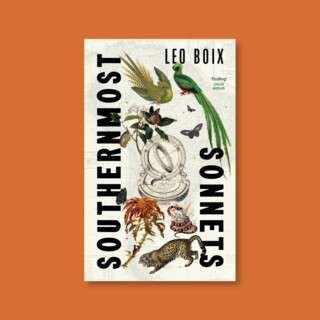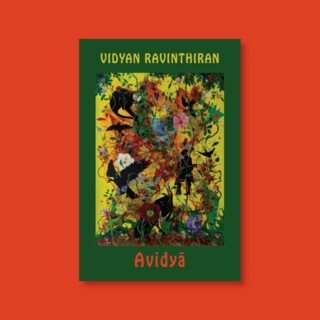Lessons from Lessing
Posted by the Bookshop

Our Author of the Month for June is the 2007 Nobel Laureate in Literature Doris Lessing. Born in Iran to British parents, Lessing was brought up in Southern Rhodesia before moving to Britain in 1949. Her first novel The Grass is Singing, set in the African bush of her childhood years, was published in 1950, to be followed by more than 50 others, some of them pseudonymous, and encompassing every conceivable genre. Below, two London Review of Books contributors, Lara Feigel and Jenny Diski, reflect on the interplay between life and art in Lessing’s work: how life informed art, and how her art came to influence life.
Lara Feigel
From ‘Free Woman: Life, Liberation and Doris Lessing’
It seems true of all the most enduring novelists, from Tolstoy to George Eliot to Lessing, that they illuminate our lives, and that we live differently as a result of reading them. It had been several years since I had encountered a novelist with this influence, or perhaps since I’d allowed myself to be shaped by fiction in this way.
I read the Martha Quest novels, where I found my own experiences of childhood (reading, yearning, arguing with my mother) alongside a less familiar experience that seemed recognisable, perhaps simply because of its intensity. Growing up like Lessing herself in the Southern Rhodesian bush, Martha discovers a kind of euphoric freedom in nature. Wandering beneath the vast African skies through the expanses of the Highveld, she encounters a liberation she cannot find with other people.
In the second novel, Martha becomes a mother, and here another aspect of my life played out. This was the most courageously graphic description of childbirth I’d ever come across and it was even more daring in its portrayal of maternal ambivalence. Lessing is particularly good at showing how deep, physical love for a child can coincide with a sense of irritated entrapment. I could certainly not conceive of leaving my own two-year-old child as Martha does and as Lessing herself had, but I could make more sense of this act now that I understood that it didn’t simply result from a lack of mother love. It emerged from heart-breaking uncertainty and left its wounds of grief and guilt.
Then I read her autobiographies and memoirs and began to see the patterns where life was transformed into art and back again; to see that Martha and Anna [Wulf, protagonist of The Golden Notebook] were and were not Lessing and that sometimes the pain she refused to confront in her autobiographies could be channelled into her novels. I moved on to her books exploring madness – The Four-Gated City and Briefing for a Descent into Hell – and was excited to see Lessing experimenting with different modes of consciousness. Th is was very much of its time, though she didn’t always admit the influence of R.D. Laing. But I liked the way that she saw madness as something people could experience together, as she had in Anna Wulf’s relationship with Saul Green. Here was a form of love transformatively different from the love I was watching being celebrated at weddings.
I read The Summer before the Dark and was disturbed and moved by Lessing’s portrayal of middle age. I was disturbed because she presented the sexual needs of the middle-aged woman as both urgent and unfulfillable. From Lessing’s close friend Suzette Macedo, I learnt that overnight at the age of fifty Lessing herself had pulled her brown curls into an austere grey bun, uncrossed her legs and adopted the persona of a middle-aged spinster. She had just gone through the menopause and was frightened that soon she would be undesirable. Always uncompromising, she wanted to preempt this by cutting herself off from men.
I had now noticed that the image of a door being slammed was used throughout her novels and autobiographies, both literally and metaphorically. She elaborates on this image in her autobiography, where she uses it to describe her move to London at the age of thirty. ‘Behind me a door had slammed shut. Doors had been shutting behind me all my life… I knew all about the mechanisms of the shut door, recognised it not by some loud external bang but what went on inside me.’ She slammed the door on her own childish vulnerability when she cut herself off emotionally from her mother as a young girl; she slammed the door on her children when she abandoned them as toddlers; now she was slamming the door on her own sexuality.
I wanted to berate her for this, and to urge her not to do it so abruptly. It was clear how much it cost her from the grief and madness in her novel. But then I read Love, Again, her wonderful late novel about an ageing woman falling passionately, physically and shamefully in love with a younger man and I learnt that this was a novel written partly to survive the humiliation of Lessing’s own unrequited passion for the composer Philip Glass, with whom she had collaborated on two operas.
Now it was Glass I wanted to rebuke, for failing to see what this return to sexuality had cost her. I wanted to ask him if he had read this novel and I wanted as a younger woman to stand up to an older man on behalf of the older woman that as a result of reading this novel I feared I would become. I didn’t want Lessing to have been proved right in her certainty that for women to allow themselves middle-aged sexual need could only end in distressed rejection. But I was reading too compulsively fully to understand these thoughts. All I knew was that through Lessing I would eventually gain more understanding both of my life as it was currently lived and of the life that awaited me later on.
Jenny Diski
From ‘What to Call Her?’ and ‘Doris and Me’, published in the LRB in 2014 and 2015
‘Emily’s you, of course,’ Doris told me, handing me the final draft manuscript of The Memoirs of a Survivor in 1973. She always let me know when I appeared in her books, or when she used something I’d told her about, events from my past or present. She also told me who the other characters were. Not all of them had familiar real-world models, but many of the key characters in her stories and novels did, even some of the science fiction and fantasy ones. By the time she published The Memoirs of a Survivor the following year, I had been back in the bin, two different ones in London, the north wing of St Pancras Hospital for several months and, not long after that, the Maudsley for nine months. Another book, Briefing for a Descent into Hell, published in 1971, centred on the story of my relationship with one of the other patients in St Pancras, while the later book, Memoirs, concerned, in part, not just a dramatisation of my arrival at Doris’s, but also a fairly accurate and equally dramatic account of the time in my life, in the early 1970s, when Roger and I ran an ‘alternative’ school for some local kids, who had been persistently truanting and running wild and were now threatened with being taken into care. Some of the later books had minor characters and odd events that were me and mine, but Memoirs and Briefing sit on my shelves quietly filled with Doris’s take on me, and aspects of my life, reinterpreted for fiction. I only read each of them once, in manuscript. Until now, they’ve been patiently bearing my sideways glance, waiting for me to take another look, and to think about what I think about them, in terms of my real life and also in terms of fiction, and all the ways in which writers, including me, quite legitimately appropriate bits and pieces of lives and people for their own ends. The writer in me never had much trouble with the books that Doris solemnly indicated had characters who were ‘you’, and I felt only mildly aggrieved at her use of some of my best stories. After all, however convinced I was that I was a writer, I hadn’t ever finished anything I started of my own writing. The sound of the voice in my ear as I typed, repeating ‘this is crap, this is crap,’ ensured that everything ended up in the wastepaper basket. So I had no real claim on my stories. And then, once I began writing myself, I realised it didn’t matter what Doris might have done with those stories (her stories, once she wrote them), they were still available to me to do with as I wanted.
*
I recall two versions of me as I look back over the first few months of living with Doris. One conforms to a description in Doris’s 1974 novel, Memoirs of a Survivor, of how 12-year-old Emily Cartwright settled in with the unnamed female narrator she’d been left with. The child is handed over and makes the narrator (in the film she was called ‘D’) extremely uneasy. The narrator interrogates her own feelings about this imposition: ‘[Emily] was watching me, carefully, closely: the thought came into my mind that this was the expert assessment of possibilities by a prisoner observing a new jailer.’ Emily is described as having ‘a bright impervious voice and smile’, of being ‘an enamelled presence’. The narrator looks for something in Emily that she might be able to like, but Emily always responds like ‘a self-presenting little madam’. Mostly Emily keeps to herself, huddled in her bedroom with her creature, Hugo, a dog-like cat, or a cat-like dog. When she comes out she is immoderately polite, excessively grateful. The narrator recognises Emily’s manner as an act, yet ‘while I was really quite soft and ridiculous with pity for her, I was in a frenzy of irritation, because of my inability ever, even for a moment to get behind the guard she had set up.’ Emily is indolent, unlike the industrious narrator, sitting for hours in a chair looking out of the window, while ‘she entertained me with comment: this was a deliberate and measured offering; she had been known, it was clear, for her “amusing comments”.’ Emily spears passers-by and neighbours with her acid insights and cruel stories. The narrator sees ‘a sour little smile, as if she was thinking: I’ve got you, you can’t escape me!’ She almost enjoys listening to Emily’s too-accurate comments, ‘but I was reluctant too, watching the knife being slipped in so neatly, so precisely, and again and again.’ This narrator, who has other things to do, has been presented, for no obvious reason, with a damaged child, too clever by half, whom she accepts as her obligation, but struggles to like.
Memoirs of a Survivor was published in 1974, 11 years after I began to live with Doris. She gave me a copy of the novel, as she did every one she wrote. It was inscribed ‘To Jenny love Doris 25/11/74’. It made familiar and disturbing reading. I could see Emily in me, just as I could see my elderly neighbour’s description of me aged three. It is as accurate a reading of me as Emily’s harsh commentary on others. It is true, but it is, of course, a doubly edited version, a view of me from the narrator’s point of view, which itself has been taken and worked for fiction’s purpose from Doris’s point of view. If there is pity in the narrator’s response to Emily, it is strained for. I discovered after a while that Doris had a habit of describing people in fiction and in life as, for example, ‘heartbreaking’ in her most distant, coolest tone, as if to mitigate her dislike of them. She saw it as being fair, I think.
The other me I recall at that time is the me of my own feelings and behaviour, which seemed always at odds or out of true with Doris’s analysis. The recollection of how I felt and behaved can’t be taken as ‘truer’ than Doris’s fictionalised me, even if I recognised what was missing in Doris’s version of Emily. As she was described, Emily only got to express herself through the narrator’s insights into her psyche. It was as if Doris didn’t want to know, or it wasn’t useful to her story to give Emily a voice or fears of her own. The narrator watches and analyses Emily’s every move and thought, and while I recognised myself in those descriptions, I also remembered being quite opaque to her, simply because my recollection is of an interiority of my own. I put the two views together, fictionalised Emily, remembered Jenny, but they never fitted. Possibly that’s because the bits of me have never fitted together as one is supposed to think they do.
Lara Feigel’s ‘Free Woman: Life, Liberation and Doris Lessing’ and Jenny Diski’s ‘In Gratitude’ are both published by Bloomsbury.




